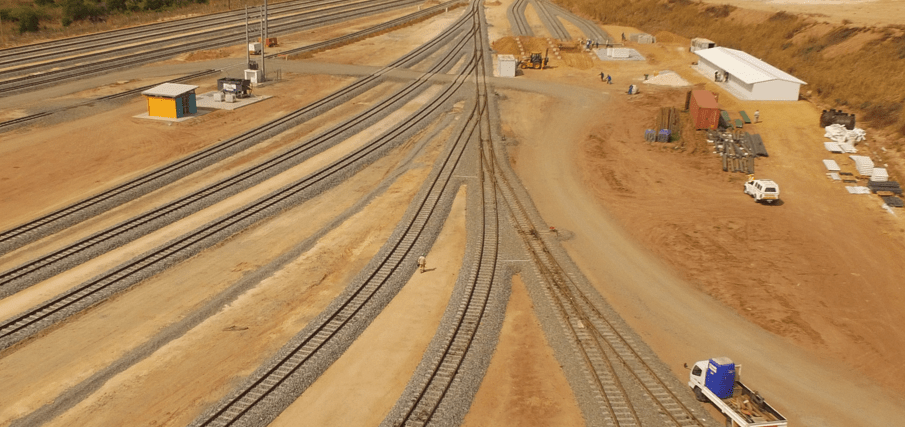Golden Rule #1: Operational basis for the Assets MUST be taken into consideration right at the start.
Defining what you want your asset to do sounds simple enough, right? But, this is exactly where everything can go very wrong. It’s the start of the pointy edge. Everything in the asset feasibility design stages or procurement process begins here, and if you get it wrong (from an operational perspective) – you’ll never live it down.
The Basis of Design (BoD) is a critical document that serves as a project’s foundation. It delineates what will be delivered to the owner, including standards to be used, climate conditions, performance outcomes (speed, weight, volume, tare weight, gross weight, geometry, life of asset, etc.).
It is vital that the project team takes into consideration that the needs of the Owner are what determines the BoD, not the manufacturer or construction company.
Typically, it is developed on the back of the Owners Project Requirements (OPR). However, many times this does not consider the entire key performance requirement that will have an impact throughout the asset life cycle – the limits to what is acceptable for the operation to perform to expectation. This would then take into consideration quality requirements, acceptable failure rates and maintenance considerations.
The BoD is an iterative document that provides a record of decisions, assumptions and process that are intended to meet the Owners project needs. So, similar to the OPR, as the project evolves the BoD should require continuous reassessment as the owner (and his Operations team if hopefully employed at this time) and design teams make decisions. The owner and project team should not be afraid to then have to reassess the budget and time constraints and amend these documents as changes occur. It is vital that it takes into consideration that the needs of the Owner are what determines the BoD, not the manufacturer or construction company.
User Requirements Specification
User Requirements Specification (URS) (also sometimes referred to as the Owners Project Requirements) is generally a planning document, created when a business is planning a development and is trying to determine specific needs and details the functional requirements of a project and the expectations of how it will be used and operated
Consultation is imperative. The operating team will live with the assets well after you have finished managing the design, manufacturing/construction and commissioning and this team is really important to you at this time – most would like to avoid them, but you need to learn to engage and embrace them.
Like a Design Brief that a new home owner might give to his or her Architect, it is intended to refine the desired end state – the purpose, the function, the value drivers and the expected operating results.
The URS should cover the criteria of Function, Form, Economy and Time.
Considerations in the URS include (but not limited to):
- Executive Summary
- Project Introduction
- Stakeholder Requirements: Stakeholders listing, organisation structure and interfaces
- Output Requirements
- Location Information
- Required Operational Considerations/Practices
- Integration and Interface needs with surrounding Infrastructure
- Boundaries of project
- Environmental, Social Impact and Sustainability Goals
- Quality requirements
- Project Specific Requirements
- Risk and Safety Requirements
- Design Criteria
- Energy efficiency goals
- Components of Project
- Project Delivery Method/Approach
- Early Operational Readiness Considerations
- Project Documentation requirements
- Project Budget and Time delivery requirements
- Measurement and Verification
Basis of Design
If the URS is the functional and operating brief of what is the desired outcome of the project, then the BoD provides the foundation to which is the approach which must be taken for the project.
The BoD will build significantly on the URS, and eventually may over-ride it, given it will become the most fundamental and contractually sensitive document in the project. This becomes the most detailed account of what is to be built and, as such, is an extremely critical document that will be the entire projects foundation.
Unfortunately, the BoD document is often forgotten until after the design process where it is then hastily thrown together and is effectively of no use to anyone.
All of the Golden Rules are linked to the BoD, which, when done correctly, demonstrates not only the team’s clear understanding of the project’s purpose, but its deliberate intent to preserve the owner’s requirements from inception to operation.
Each of the elements in the URS are expanded on in detail in the BoD, and references to this document in all other documents and drawings will eventuate. The BoD is a document that records the major thought processes and assumptions behind design decisions made to meet the URS and the design team should use the BoD document to show “how” their), a general planning document that determines the requirements, expectations, and operational functionality of a project, including those specified in the Request for Procurement (RfP). Ideally, the BoD should show “how” the team’s assumptions and specifications will enable the completed project to satisfy the requirements listed in the URS. Consultation and collaboration in creating both these documents are imperative, and, ultimately, in everyone’s best interests.
To ensure the BoD meets all of the owner’s needs and desires, it should address in detail the design elements identified in both the Request for Procurement (RfP) and the OPR. Hopefully, the URS captured all of the owner requirements in the RfP, but it’s a good idea to review the URS against the RfP.
The URS must serve as the source document for the BoD. So, it is important that the first major section of the BoD provide a restatement of the URS’s project description—an overview of the purpose and essential functions.
Each requires continuous reassessment as the owner, the operations team, and the design teams make decisions. All must be unafraid to reassess the budget and time constraints, and amend these documents, as needed.
If a URS has not been provided by the Project Owner, then the development of the BoD becomes even more critical, and collaboration even more important. It may be required that the BoD in this circumstance needs to be developed with more detail and background information so that it can cover off the expected detail that would have been covered in the two separate documents.
Avoiding the “decision-making hiatus”
Some engineers may view all this front-end collaboration as opening the door to risk: potentially introducing design delay and over expenditure in the asset procurement. It is rare that a manager will consider the impact of capital payback if you get it wrong at this stage. This is because the manager’s or engineer’s performance bonus may be calculated on conventional industry metrics such as meeting schedules and budgets, no matter what. It is this maddening approach that needs to be countered in the preliminary stages of the project, to ensure that the “decision-making hiatus” is averted.
Schedule is hard to negotiate because business pressures almost always require a project to start on time, since cash flows are necessary to pay off the investment expediently to meet business and market expectations. But let me put this out there – is blowing the budget by a small percentage worth it, if it will significantly reduce the risk of asset failures or inefficiencies as the operation begins? A cost benefit analysis of the impact, in many cases, will prove that a slight overrun in budget can be paid off in just months. This is, again, why the BoD is the most fundamental and contractually sensitive document, establishing the project’s purpose, approach, function, value drivers and expected operating results from the get-go.
All of the Golden Rules are linked to the BoD, which, when done correctly, demonstrates not only the team’s clear understanding of the project’s purpose, but its deliberate intent to preserve the owner’s requirements from inception to operation.
In part two, we'll discuss how to understand the balance between “Innovative Benefits” vs. “Innovative Risk.”
Explore all six parts of the 'Creating the Optimal Asset Series'.




